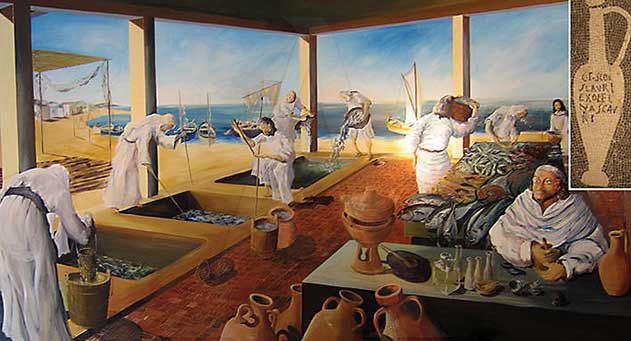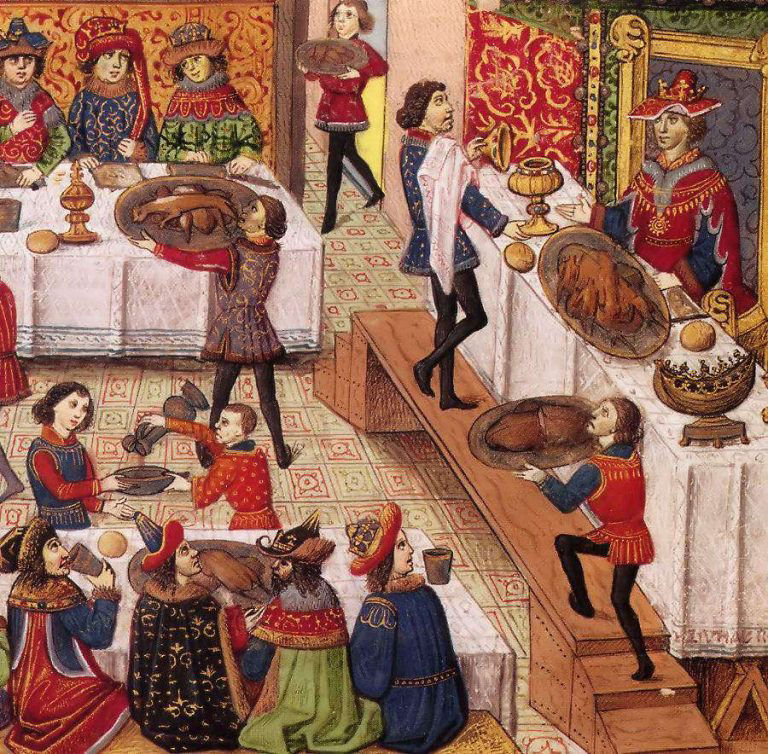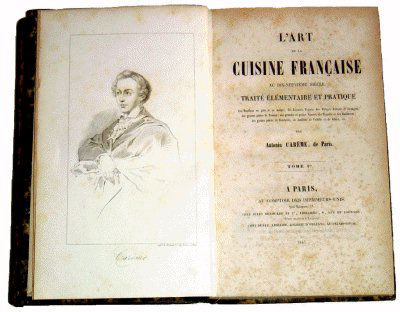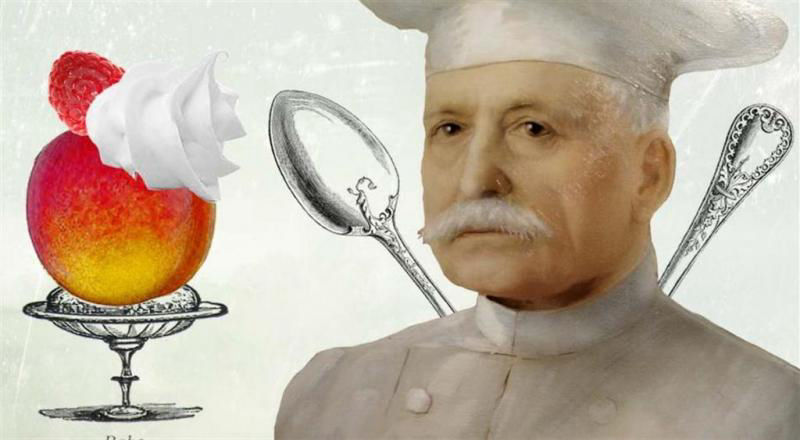
History of Sauces
The word 'sauce' comes from the Latin salsus, participle of the verb sallere (to put in salt), which comes to indicate that food that is salty due to the use of seasoning with salt in its preparation. In some languages, such as English and German, the word salsa (pronounced this way) and within the culinary context refers exclusively to sauces of Mexican origin. Sauces of Mexican origin are characterized by their spicy seasoning, as well as their weighted use of herbs and spices, making a distinction from all those that do not fit in that category as dressings. The 'compound sauce', as some authors call it, consists of a sauce made in the kitchen and served on a plate, in the style of French cuisine, and is quite different from its counterparts in Asian cuisines in which Sauces are part of the dish 'itself', as is the case with the different curries. It is very possible that the sauces come from first basic dressings: salty, spicy, acidic citrus fruit juices, sweet like honey and sugar, aromatic with various herbs. More elaborate than seasonings are seasonings, which are distinguished and classified in the kitchen by many culinary authors, many of the seasonings are made from fermented foods. Finally, the maximum degree of sophistication in the composition of the flavors is found in the sauces. The difference between the three concepts is minimal in the popular language that names the dressing, the condiment and the sauce with the same name: sauce.
The first detailed indications of the existence of sauces date back to the Romans, who used garum (which is the queen sauce of Roman cuisine), made with fish intestines (mackerel from Cartagena is noted) marinated in brine, fermented in the sun and seasoned with spices. The Roman gourmet Marcus Gavius Apicius reports on this sauce in the 1st century BC in his book De re coladora, some of the names such as liquanum (used as a generic term for brines, marinades, juices, etc.). They say of this same time that the emperor Domitian interrupted the political discussions of the Roman Senate several times to find out which sauce was best with the turbot that was going to be prepared that night at a banquet for his guests.

History of Sauces
It is quite possible that the cuisine of the Middle Ages in Europe had a poor stock of sauces and that their flavors were very spicy and bittersweet. One of the best known was verjuice (a kind of unfermented must), dodine, cameline. A distinction is made between gravy and grané (expected meat broth with grains) that gave rise to English gravy.The medieval culinary writer Taillevent mentions making some sauces in his book Le Viandier.
Already in the 18th century it began to be refined and to have a more aromatic and elaborate flavor. The French cooking system began to bear fruit in the field of making sauces, in this way François Pierre de la Varenne (1618 - 1678) began to write the first systematized cookbooks. Marie-Antoine Carême (1784-1833) has been one of the main researchers and classifiers of the different sauces in four families: espagnole, velouté, allemande, and béchamel. Carême showed how it was possible from these four mother sauces to build a hierarchical system in the production of sauces known as: the "French system of sauces". Auguste Escoffier (1846-1935) promotes culinary art at a professional level and reviews the classification of sauces previously made by his compatriot Carême: espagnole, velouté, béchamel, hollandaise and tomato. Escoffier's system is the one that has been taught to chefs in the 20th century.
In the 20th century, nouvelle cuisine was characterized by a rejection of complicated dishes, sauces thickened with flour, and overcooked vegetables. New sauces such as thousand islands sauce continues to be invented. Sauces are beginning to be used in fast food accompaniments. Already at the beginning of the XXI the Spanish chef Ferrán Adriá invents an almost 'weightless' sauce that he calls air and applies the concept of deconstruction to haute cuisine.
In gastronomy, sauce is called a liquid mixture of hot or cold ingredients that are intended to accompany a dish. The liquid or semi-liquid consistency of a sauce can cover a very wide range that can go from puree to the most liquid of a broth. Some authors define sauce as a liquid condiment for food. Sauces not only affect the sensations of taste and smell, they can offer different colors that affect the appearance of a dish and sometimes orchestrate different sensations at the same time.
In traditional cooking courses they are part of the first chapter, since it is considered that the first skill of every cook should be the preparation of sauces. The special qualities of an elaborate sauce reflect the skills of the cook. Sauces admit many categories: by temperature (hot or cold), by flavor (sweet, spicy, sour, etc.), by content (emulsifiers, binding, etc.), by stability, etc. Despite all this, today sauces are sold canned and are available in any supermarket.
In haute cuisine there are chefs within the kitchen organization who are specialized in the tasks of preparing the different sauces used in dishes. They are called from the French "saucier" (sauce maker). In this type of cuisine, the sauce is sometimes used as a decorative element in the presentation of the bottom of some dishes.

History of Sauces
Marie-Antoine Carême, was born on June 8, 1784, on the Rue du Bac, in Paris. Coming from a large family, he is estimated to have between 15 and 25 siblings with very limited resources, supported by his father, a stevedore at the nearest docks. He was abandoned to his fate at the age of 10, in 1793, a very popular custom at the time of the late 18th century in poor families. Many children were left in the streets, without recommendation or care, and ended up exploited in exhausting jobs, poorly paid or given over to begging and prostitution.
However, this was not the story of Carême, she wandered the streets all day and the night surprised her at the doors of La Fricassée de Lapin tavern in the Maine neighborhood, where the compassionate innkeeper offered her hospitality for that night. Fortunately, I work as a cook (helper) in the local kitchen, an offer to which the boy gladly agreed.
That was the opportunity for Carême to discover and hone his talents and skills in haute cuisine. In 1799, at the age of 16, he was hired as an apprentice at Chez Bailly, the most important pastry chef in the city of Paris at the time. He learned to read and write on his own, and showed a great talent for architecture and drawing, which is why his patron encouraged him to visit the National Library to learn about and examine in detail the architectural designs they possessed. Carême transferred all his knowledge of architecture, design and drawing to the pastry shop, executing incredible works and assemblies in sugar, which attracted much more fame to the renowned pastry chef.
In 1801, at the age of 18, he left Chez Bailly and joined the pastry shop of the Gendron heirs as chef, where he continued his innovations in pastry making and served as an "extra" or reinforcement of the banquets offered in the city of Paris at that time. Thanks to these "extras" among other things, he managed to open his own pastry shop in 1804, astonishing everyone with his creations and at the same time improving himself extraordinarily in the art of cooking.
He was at the service of relevant figures of his time: the Tsar of Russia Alexander I, the Prince of Wales and later regent of England George IV, Lord Steward, Prince Sterhazy and finally Baron Rostchild, until 1829 when he decided to retire and give up completed his career to devote himself completely to his literary work, until his death in 1833.
Carême wrote works that surpass the cookbooks and kitchen treatises written in his time, they are didactic, classifiers and synthesizers, something that represents an innovation in the art of cooking, because it is not limited only to enunciating a long list of recipes, if not which analyzes and classifies all the dishes, as shown in his masterpiece "Art de la cuisine française au XIX".
He can be considered a precursor of dietetics and logic in nutrition, he fought the abusive use of spices and the habit of mixing meat and fish in the same dish, eliminated fat excesses and tries to balance calories in his menus. In addition to passing the history of sauces as the fixer of the funds and the sauces that are the basis of today's cuisine.

The book that changed the history of sauces in the West
The art of French cuisine in the 19th century: classifying the sauces of the time into five families, each one headed by a basic sauce from which infinite variations arose.

Marie-Antoine Carême
Auguste Escoffier, "The chef of kings and the King of chefs", was born in the coastal town of Villeneuve-Loubet, France, on October 28, 1846. His career in the kitchen began at the age of 12 when he entered in apprenticeship at his uncle's restaurant in Nice and at the age of 19 he decided to advance and gain experience, this time working in Paris. Escoffier was the first great chef who worked directly for the public throughout his entire career and not in the kitchens of royalty and nobility of the time, like Carême.
Escoffier's name became world famous when he was given the direction of the kitchens of the recently opened Hotel Savoy in 1890, and he created the peche Melba (peach Melba) in honor of the famous singer Nellie Melba when she was staying there in 1893. In 1899 He moved into the Carlton Hotel, where he was to build a fabulous reputation for fine dining for the next 23 years. He stood out for preparing exquisite dishes that he baptized with the names of the diners who tasted them: friends, artists and important people in different areas of society.
It is said that the Emperor Wilhelm II told Escoffier: "I am the Emperor of Germany, but you are the emperor of chefs." In recognition of his services to French cuisine abroad, he was awarded the Legion of Honor in 1920 and became an officer of the order in 1928.
In addition to the fame of his name, which is said to be even greater than that of Maria Antoine Carême, Escoffier wrote several books, notably Le Guide culinaire 1903, co-written with Philéas Gilbert and Émile Fetu, a comprehensive guide to the art of modern cooking that He listed the dishes according to their order of presentation and included the first à la carte menus; Le Livre des menus in 1912; "The Book of Menus" and Ma cuisine in 1934 "My kitchen."
Escoffier simplified food service by promoting the use of seasonal ingredients and the abandonment of overly elaborate side dishes. He also simplified the organization of professional kitchens. These ideas were disseminated in detail through Larousse Gastronomique in 1938, a definitive work on classic French cuisine by Escoffier's friend, Prosper Montagné, a notable chef. Escoffier's memoir, Unpublished Souvenirs «Memories of my life», was published posthumously.He died on February 12, 1935, at the age of 89, a few days after his wife.

Auguste Escoffier